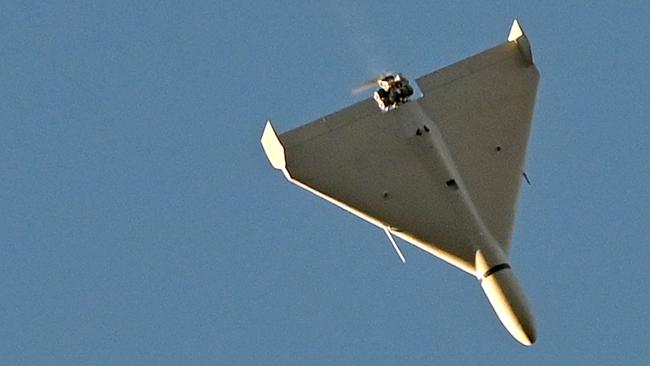
But time seems to be running out. Two years ago, Australia’s strategic update said war might be less than 10 years away, but the situation has recently markedly worsened, says Angus Houston, a review author. Last month, US Navy chief Admiral Mike Gilday said war might be in 2023.
Making defence force improvements quickly seems problematic. Most overseas missile production lines are fully taken up meeting Ukraine war demands and can’t meet new orders for five to six years. Moreover, their complicated manufacturing means any new submarine, warship or fighter jets ordered won’t arrive until next decade.
What can be done quickly and affordably?
First, the Ukraine war highlights how modern conflicts use emerging technology to find hostile forces and make the battlefield transparent. Adversary units are then killed using indirect fire; that is, long-range artillery, rockets, drones and missiles. As demonstrated, this holds for war on land and on sea. On the other hand, friendly forces, to survive, will need to be small, hard to find and highly mobile. Large, slow, heavily armoured vehicles will be quickly targeted and killed.
Buying these capabilities from offshore would take many years. However, there’s many small to medium-sized Australian companies able to build much of what would be necessary. Some technology is already being prototyped through defence innovation seed-funding and could be fielded swiftly. Crucially, being designed for fourth industrial age manufacture they could be rapidly built in large numbers. However, for defence traditionalists, a culture shift away from relying on a few big land, sea or air vehicles to quickly buying many small systems would be intellectually difficult. Thinking is the big barrier, not technology or money.
Second, expanding defence needs all Australia. Australia’s defence force moving beyond its peacetime business-as-usual settings means redirecting, reallocating or repurposing resources from across the whole nation.
To do this, having resilient, global supply chains is crucial. In both world wars, Australia’s great-power allies – not Australia – decided what merchant shipping would come here, so our exports and imports were at others’ mercy. This was again highlighted in the pandemic and needs fixing.
The most vulnerable supply chain is importing petrol. Australia could be quickly shut down by a major conflict in Korea or Taiwan, or even Europe, that saw shipping diverted or the world’s largest shipping fleet (China’s) denied us. Australia would be just collateral damage. We need to have our oil stockpile in Australia, not Louisiana, build a sustainable jet fuel industry as Qantas seeks, and work to cut our dependence on overseas petrol by embracing electric and hydrogen vehicles.
Last, people are essential in mobilisations with the major workforce problem always being a shortage of skilled personnel.
Analysing key defence and industry sectors now could determine which skills were likely to be scarce in a mobilisation and need husbanding, which jobs can be simplified to allow lesser-skilled people to undertake them and accelerated training approaches developed for new staff hires. In this, any expansion of a peacetime military initially requires growing its training capacity; let’s start doing this now. Moreover, the largest single sector in Australia’s defence workforce is contractors. Expanding the contractor base would involve keeping those in it when mobilisation begins; making the best use of these staff; and bringing more in. Let’s start preparing for all this now, not in a rush after a war starts.
Mobilisations don’t happen by themselves. Governments must provide the guidance, direction and controls to make mobilisations succeed. However, this is not World War II when the Australian government was interventionist, took charge and directed the nation.
Today’s “regulatory state” is designed differently. The federal government focuses on policy, with others performing implementation. Pandemic experience with the Vaccine Taskforce and the International Freight Assistance Mechanism program showed there is a “missing middle” between policy and implementation that would need filling when mobilising. Such small cells would not be needed regularly and might be kept in a backup state using reservist staffing, military or civilian. Without this, future mobilisations would be initially disjointed and valuable time lost reinventing what is already apparent will be needed.
Australia needs defence innovation, assured access to merchant shipping, a reduced dependence on overseas petrol and hard thinking about using people in the best way possible. Much can be done quickly. It’s not rocket science. It just needs effort.
Peter Layton is a visiting fellow at the Griffith Asia Institute, an associate fellow at the Royal United Services Institute and the author of Grand Strategy.






Australia’s Strategic Defence Review is well under way examining basing, acquisition scheduling and mobilisation. Forget the rest, the last is the key issue. As in earlier wars, Australia will fight future wars with a mobilised defence force, not today’s peacetime, business-as-usual one. Today’s armed force is at best a core, only partly related to a wartime mobilised force. Ukraine and Russia now both understand this very well.